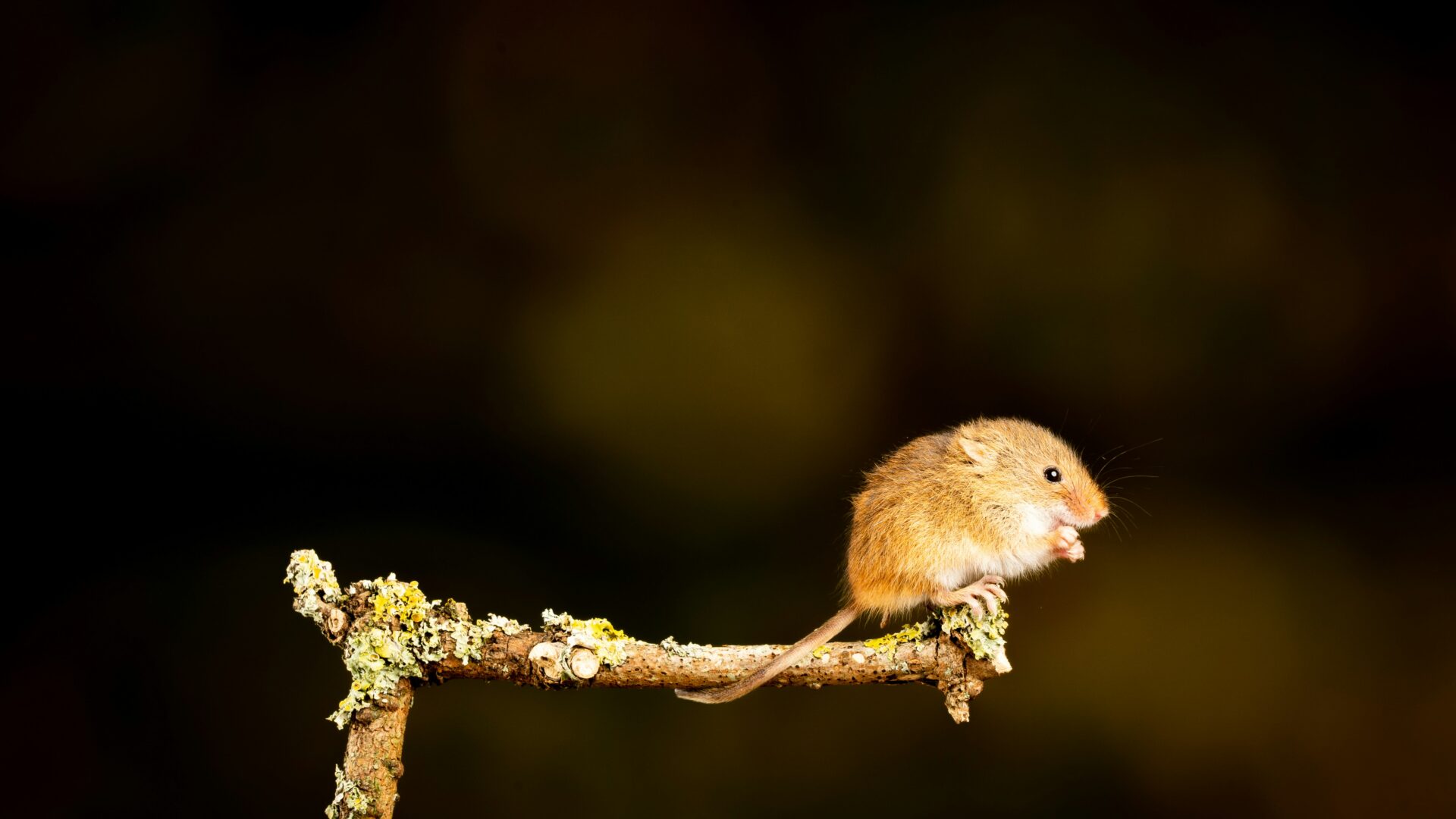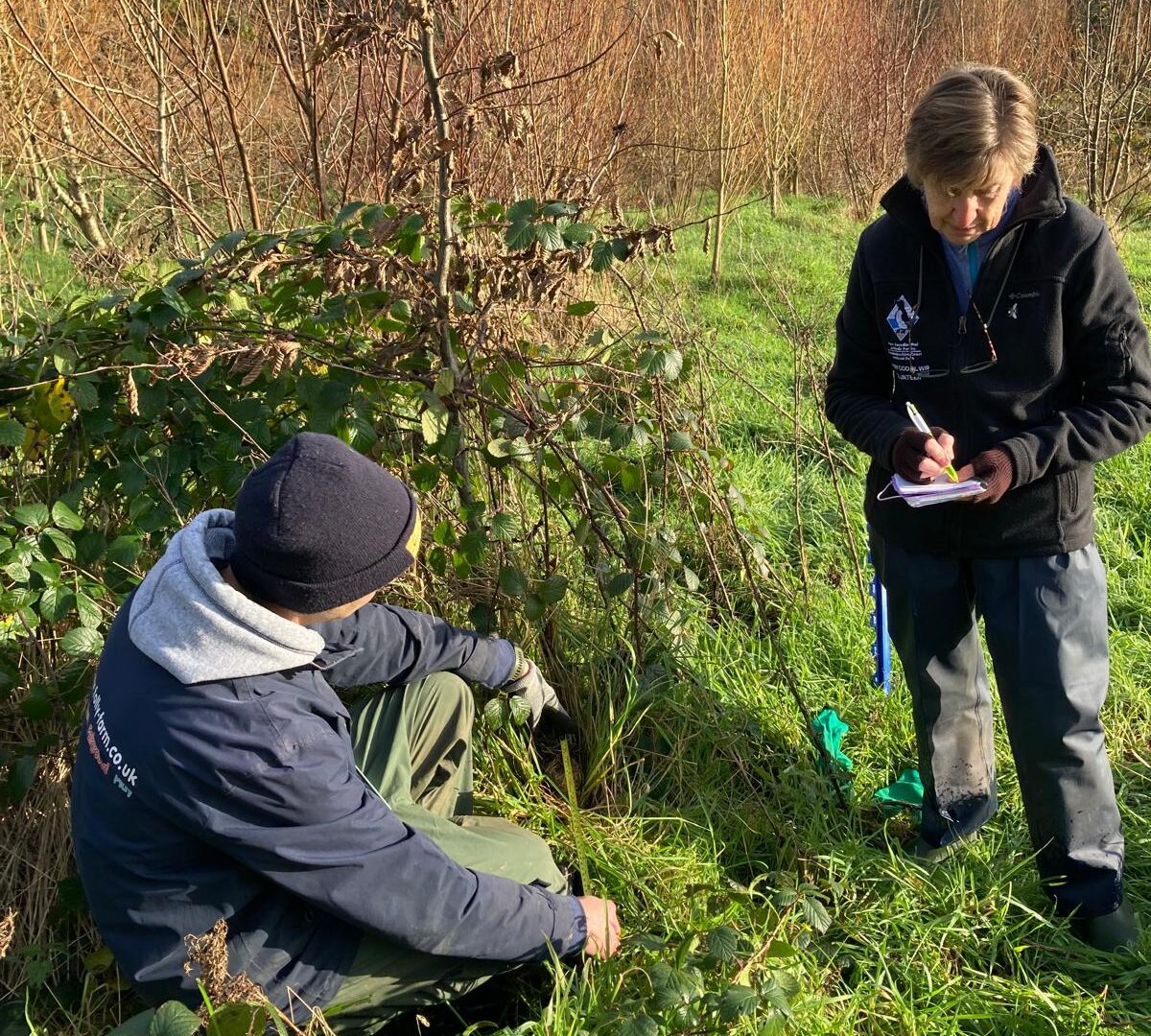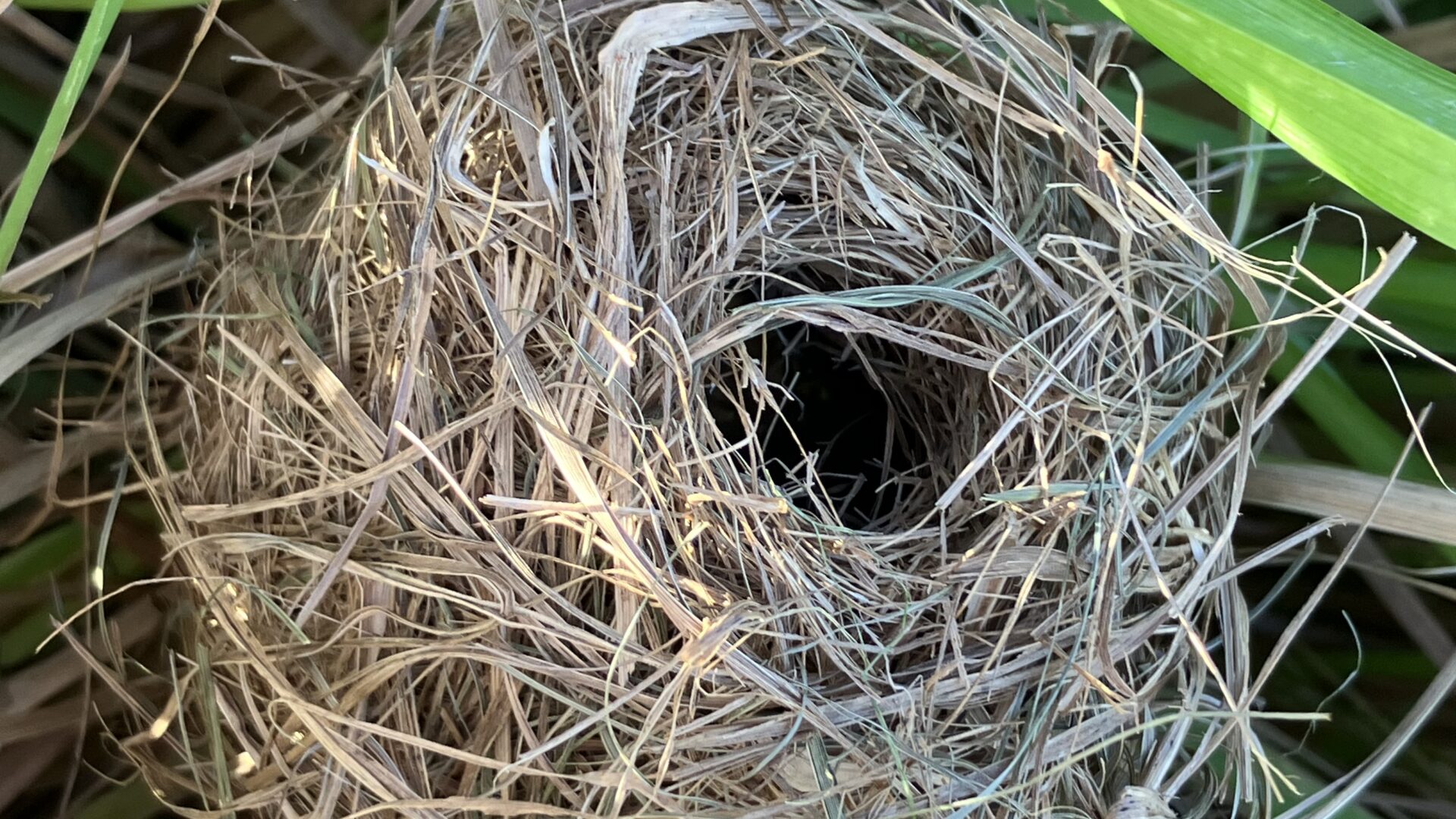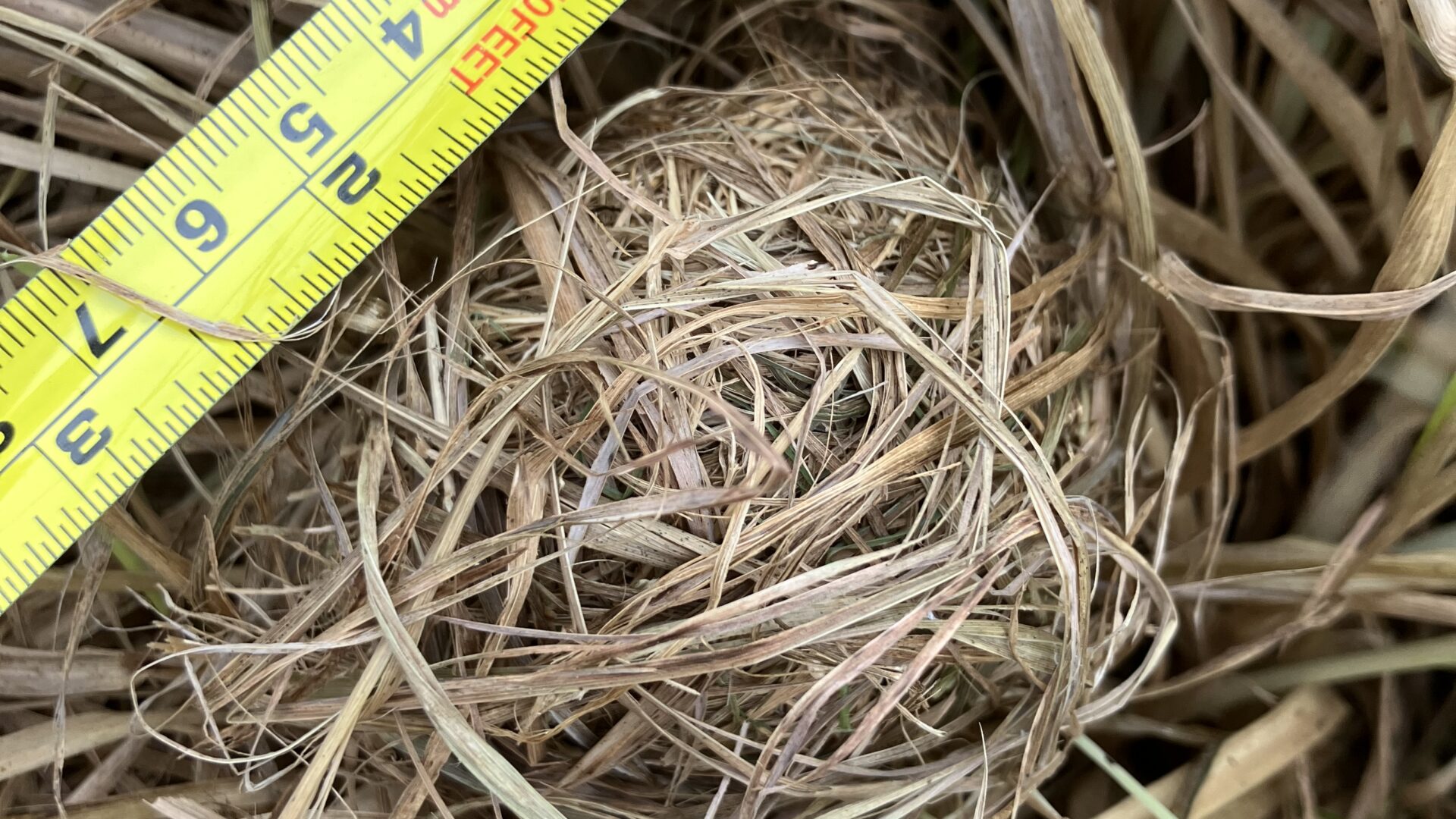
Look Wild: Harvest Mouse
-
Date posted: 11/12/2024
-
Time to read: 10 minutes
Anyone can record wildlife. From super scientific surveys to basic backyard observations- it all helps to build up knowledge and understanding of our habitats.
Winter is the season for harvest mouse surveys. The harvest mouse, Micromys Minutus (lovely name), is the smallest rodent in Britain. and is said to weigh about as much as a two pence coin. It has reddish-brown fur, a head and body that are about 5-7cm long and a tail that is 5-7cm long too. It lives in rough grassland, loves field margins (especially arable), hedgerows (especially with bramble), and likes wet areas, reed beds and tall tussocky grasses. Its diet consists of seeds, insects, fruit and nectar. This little mouse has all but disappeared from the countryside. It was once assumed that the harvest mouse was widespread and common – but it now appears on the red list of threatened species. Through monitoring we will have a better idea of how many there are, where they are, how well connected our habitats are and what we can do to manage land to allow them to thrive.

Our surveys always start in October, because nests are empty therefore mice are not being disturbed. We focus on looking for those empty nests to establish presence. Nests are more easily visible in winter as vegetation has died back. They are distinctly woven and roughly tennis ball size. Surveys can continue through until March, depending upon the weather as nests tend to degrade as the winter goes on. Harvest mouse surveys are not for the faint hearted. The terrain can be difficult, very wet and boggy, with uneven ground amongst high tussocks of grass, but we have discovered beautiful, undisturbed places in Pembrokeshire that we would otherwise never have thought of visiting.
Harvest mice are under threat and the main problems seem to be a loss of unmanaged habitats, loss of field margins, combining, pesticide use, hedge management, flooding and climate change. During our time doing surveys, what has become glaringly evident to us all, is the importance of field margins. Leaving margins with tussocky grasses close to hedges is hugely important. Let’s hope that land managers continue to do more of it on their land to allow these beautiful little mice to thrive.

Cath, Cathy and Ellie have formed a strong friendship through their wildlife monitoring . Together they’ve undertaken bee walks, butterfly transects, adder tracking and many other surveys both for the National Park Authority and other local and national organisations. Their monitoring days involve car sharing, a picnic, and plenty of chat and laughter. Harvest mouse surveys are a great way to ensure they get out regularly over the winter months, and have also led them to discover and explore beautiful and wild parts of Pembrokeshire. Monitoring gives them a sense of achievement knowing that they are helping by collecting data on species that are struggling. Its good to know that the information goes into National databases, and can be used by organisations and land managers to help protect those species.
Wildlife monitoring is a great way to help nature, and help yourself with fresh air, exercise and the knowledge that you are giving back to nature. Pembrokeshire Coast National Park Authority is grateful for all the data they have collected. It has encouraged us to adapt our management regime at certain sites, and work with landowners to suggest positive changes they can make.

This blog was written by Rebecca Evans (Volunteer Development Officer), volunteers Cath Myatt, Cathy Woodhouse, Ellie Sherwin at Pembrokeshire Coast National Park. Banner photo by Nick Fewings.